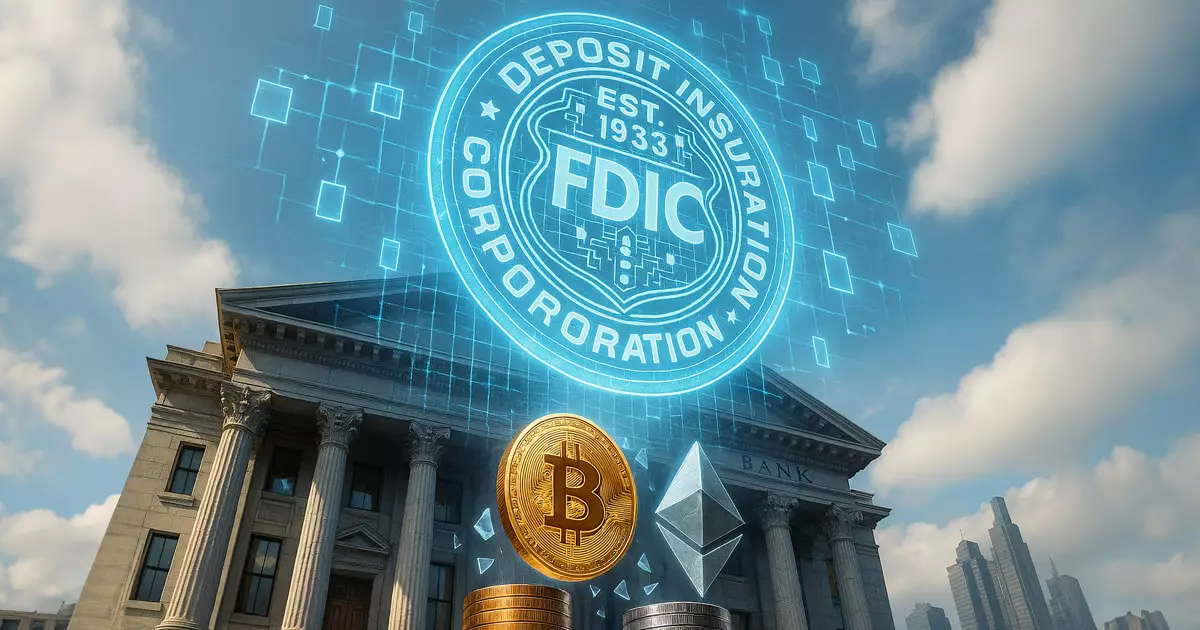The landscape of banking in the United States is on the verge of a pivotal transformation, particularly regarding the integration of cryptocurrency and blockchain technologies. The Federal Deposit Insurance Corporation (FDIC) is heralding a fresh approach, one that mirrors the more liberal stances seen internationally, especially in nations that have long embraced public blockchains. This is not merely a bureaucratic shift; it symbolizes a much-needed evolution in the regulatory fabric that governs banking and digital assets. As the FDIC updates its framework to allow for banks’ engagement with these disruptive technologies, the implications of this change are profound.
A notable aspect of the FDIC’s proposed changes is its recognition that a blanket prohibition on public blockchain usage is overly restrictive. The regulatory caution that U.S. banks have followed historically may no longer align with modern technological advancements and market expectations. Acting Chairman Travis Hill’s acknowledgment that the time has come to re-evaluate this cautious approach is a welcome breath of fresh air. The banking sector must adapt quickly to the rapidly evolving digital landscape rather than lag behind or resist change.
Establishing Clear Guidelines
While the FDIC’s new framework signals a permissive stance, it is crucial to emphasize that this transformation isn’t a blank check for banks to operate as they please in the crypto space. Hill has underscored the importance of implementing robust guardrails. An regulatory framework that lacks defined standards could lead to chaos and detrimental consequences not only for the banks but also for the customers they serve. In this regard, the FDIC’s commitment to developing durable standards for blockchain activities is essential.
It’s a fine line that regulators must walk — allowing innovation while ensuring safety and soundness. This delicate balancing act will determine whether banks can position themselves as leaders in the digital finance revolution or remain on the sidelines due to unchecked risks. The FDIC’s proposals will be subjected to scrutiny as they seek to clarify permissible crypto-related activities, thus establishing consistency in supervision.
The Future of Stablecoins and Regulatory Oversight
Stablecoins present another area ripe for exploration under the new FDIC framework. They represent a hybrid financial instrument that straddles traditional banking and blockchain technology. However, they also bring risks, including liquidity issues and potential avenues for illicit finance. While the FDIC’s exploration of pass-through deposit insurance for stablecoin reserves is an intriguing development, the urgency to refine regulations surrounding these digital currencies cannot be overstated. As Congress engages further with the stablecoin discourse, clarity from the FDIC on eligibility for stablecoin reserve deposits will be vital.
As the popular saying goes, “money never sleeps.” The melding of traditional money with blockchain might give rise to new issues, particularly in how financial instruments behave in times of market stress. The FDIC’s proactive engagement in this space demonstrates an admirable commitment to ensuring that all facets of banking, including those tied to cryptocurrencies, are assessed with an eye toward practical risk management.
Tokenization of Assets: A Double-Edged Sword
The tokenization of real-world assets poses a promising opportunity for banks to innovate and serve customers more efficiently. However, it is inherently a double-edged sword. Hill’s assertion that “deposits are deposits, regardless of the technology” is sound, yet it results in a plethora of complexities that must be meticulously worked through. If banks offer services tied to tokenized assets, they need to ensure that their customers can access their funds and maintain liquidity, even during stressed market conditions.
By addressing potential pitfalls associated with smart contracts and their execution, especially during bank failures, the FDIC is wise to remain vigilant. Regulatory measures that stop unintended fund outflows during banking crises will be crucial for maintaining stability in a decentralized financial environment.
The FDIC’s outlined path represents a significant step toward modernizing U.S. banking regulations in the face of burgeoning cryptographic innovations. While the agency embraces the potential for innovation through blockchain and cryptocurrencies, strict adherence to prudential standards will remain a significant focus. The approach is a significant shift and presents both opportunities and challenges that could define the future of banking in the United States. The stakes are undeniably high; those who manage to navigate this complex landscape with prudence will define the future of finance, while those who fail to adapt may find themselves entirely sidelined in a new digital economy.


Leave a Reply